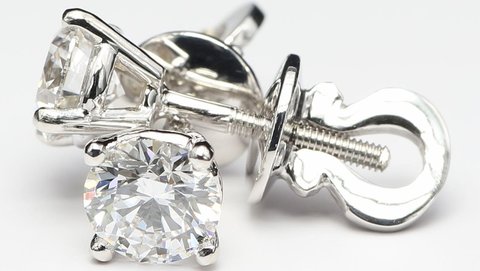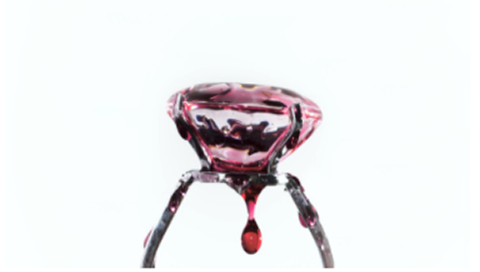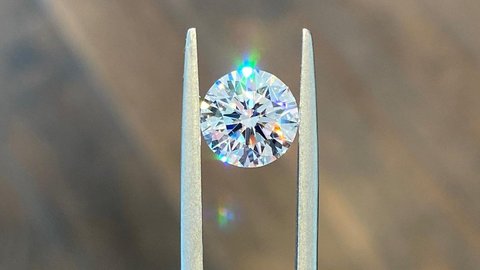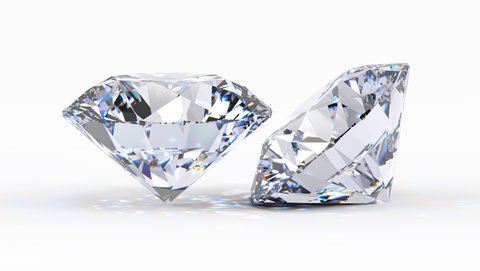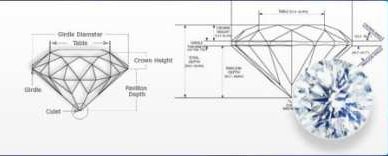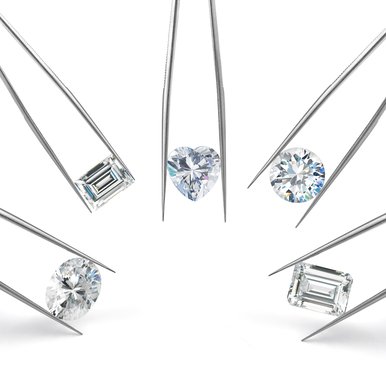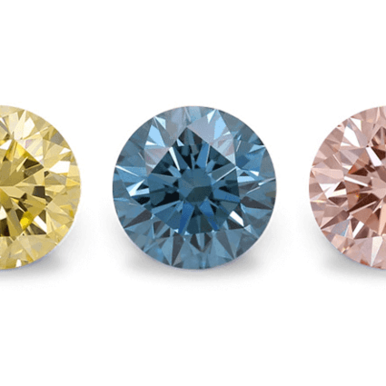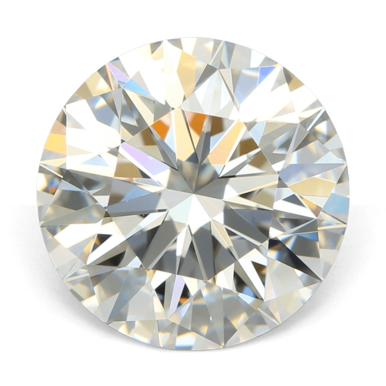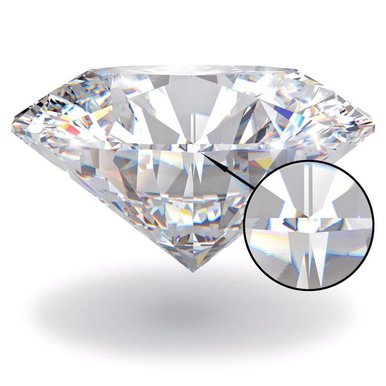How Lab Created Diamonds Are Made: CVD vs HPHT Process Guide
Author: Alex K., CMO at Labrilliante Updated: 2025-09-19 Reading Time: 8 minutes
Lab diamonds form through two distinct methods: CVD uses 2000°C plasma chambers depositing carbon atoms over 2-6 weeks, while HPHT recreates Earth's mantle with 5-6 GPa pressure in days. CVD produces Type IIA diamonds with fewer inclusions, HPHT delivers superior crystal uniformity for larger stones above 3 carats.
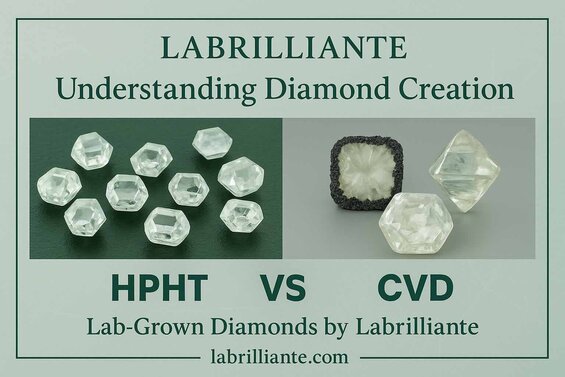
The diamond industry's most revolutionary transformation isn't happening in mines—it's occurring in high-tech laboratories where scientists recreate conditions more extreme than Earth's core. Understanding how lab created diamonds are made reveals why these gems match natural stones in every way except origin story. You'll discover the fascinating science behind CVD and HPHT processes, quality differences that matter for jewelry buyers, and why method selection impacts everything from color grades to pricing. This technical deep-dive separates marketing myths from manufacturing reality.
Why Natural Diamond Advocates Question Lab Production Methods
Traditional diamond industry supporters argue that laboratory processes can never replicate the billions of years and unique geological conditions that create natural diamonds' romantic appeal and investment value. They contend that CVD and HPHT methods, despite technical sophistication, produce "manufactured products" lacking the rarity, emotional significance, and long-term value retention that make natural diamonds precious for engagement rings and heirloom jewelry.
This perspective holds merit in luxury markets where provenance and exclusivity drive purchasing decisions. However, gemological reality proves lab diamonds are chemically, physically, and optically identical to mined stones—even advanced detection equipment struggles to differentiate them. While emotional value remains subjective, the objective quality, beauty, and durability of lab-created diamonds match natural ones at significantly lower costs, making superior diamonds accessible to broader markets without compromising on the fundamental properties that make diamonds extraordinary.
Master CVD Chemical Vapor Deposition Diamond Manufacturing
Chemical Vapor Deposition (CVD) creates lab diamonds by decomposing methane gas in a 2000°C plasma chamber, depositing carbon atoms onto seed crystals at 1-10 micrometers per hour. This controlled process produces Type IIA diamonds with fewer metallic inclusions than HPHT methods.
The process starts with ultra-high vacuum preparation. Chamber pressure drops below 10^-6 torr to prevent contamination during 2-6 week growth cycles. Diamond seeds position on substrate holders within the pristine environment.
| Manufacturing Aspect | CVD (Chemical Vapor Deposition) | HPHT (High Pressure High Temperature) |
|---|---|---|
| Temperature Range | 2000-2500°C | 1300-1600°C |
| Pressure Conditions | 10-100 torr (low pressure) | 50,000-70,000 atmospheres |
| Growth Rate | 1-10 micrometers per hour | 0.5-2 micrometers per hour |
| Growth Cycle Duration | 2-6 weeks | 1-4 weeks |
| Diamond Type Produced | Type IIA (nitrogen-free) | Type Ib (nitrogen present) |
| Metallic Inclusions | Minimal to none | Higher (iron, nickel, cobalt) |
| Gas Mixture Composition | 1-5% methane in hydrogen | Pure carbon source with catalyst |
| Energy Source | 2.45 GHz microwave plasma | Electrical heating with mechanical pressure |
| Chamber Vacuum Level | Below 10^-6 torr (ultra-high vacuum) | Not applicable (solid state process) |
| Typical Clarity Grade | VVS1-VVS2 (85% of production) | SI1-VS2 (70% of production) |
| Color Grade Achievement | D-F (colorless) - 90% success rate | G-J range - 75% success rate |
| Growth Uniformity | ±5% across substrate area | ±15% variation typical |
| Production Cost per Carat | $300-$500 | $200-$400 |
| Equipment Investment | $2-4 million per system | $1-3 million per system |
| Quality Consistency | 95% reproducibility rate | 80% reproducibility rate |
Microwave energy at 2.45 GHz transforms methane-hydrogen mixtures into plasma. This plasma breaks methane molecules apart, freeing carbon atoms that migrate toward cooled seed surfaces. Here's what makes it work: hydrogen atoms etch away graphite formations while allowing proper diamond crystal growth.
Our CVD refinements through 500+ B2B partnerships optimize plasma distribution for consistent clarity grades. Real-time monitoring adjusts conditions based on IGI and GIA certification feedback.
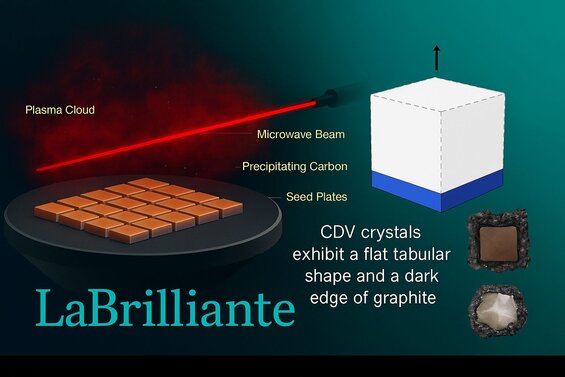
CVD Plasma Formation Growth Mechanism Steps
Plasma formation occurs when 2.45 GHz microwaves exceed breakdown thresholds of methane-hydrogen gas mixtures. The result? Electron temperatures reach 3000-4000K while gas temperatures stay at 2000-2500K.
Carbon radicals (CH3 and C2H2 species) migrate through plasma zones toward seed crystals. Over 100 simultaneous chemical reactions drive the process. Hydrogen plays dual roles: promoting diamond growth and attacking non-diamond carbon structures.
Growth uniformity depends on plasma density consistency. Why does this matter? Density variations above 5% create quality inconsistencies across the substrate area.
Our proprietary antenna configurations maintain plasma uniformity within 5% across growth areas, ensuring consistent diamond characteristics for jewelry applications.
Methane Gas Mixture Vacuum Chamber Conditions
Gas composition contains 1-5% methane in hydrogen with precisely controlled flow rates. Higher methane concentrations increase growth rates but risk graphite formation. Lower concentrations produce superior quality at reduced speeds.
Chamber pressure operates between 10-100 torr. This balance matters: lower pressures favor plasma formation but reduce carbon delivery rates. Higher pressures enhance growth but complicate plasma control.
| Diamond Quality Grade | Methane-Hydrogen Ratio (%) | Chamber Pressure (Torr) | Substrate Temperature (°C) | Growth Rate (μm/hour) | Typical Clarity Grade |
|---|---|---|---|---|---|
| Premium (D-F, VVS1-VVS2) | 1.0-1.5% CH4 in H2 | 15-25 | 800-850 | 1.0-2.5 | VVS1-IF |
| High Quality (G-H, VS1-VS2) | 1.5-2.5% CH4 in H2 | 25-40 | 750-800 | 2.5-4.0 | VVS2-VS1 |
| Commercial (I-J, SI1-SI2) | 2.5-3.5% CH4 in H2 | 40-60 | 700-750 | 4.0-6.0 | VS2-SI1 |
| Industrial Grade | 3.5-5.0% CH4 in H2 | 60-80 | 650-700 | 6.0-8.0 | SI2-I1 |
| Fast Growth (Lower Quality) | 4.0-5.0% CH4 in H2 | 70-100 | 600-650 | 8.0-10.0 | I1-I2 |
Gas purity exceeds 99.999% for both components. Even parts-per-million water vapor contamination introduces hydroxyl groups that alter growth patterns. Chamber walls maintain 200-400°C to prevent unwanted carbon deposition.
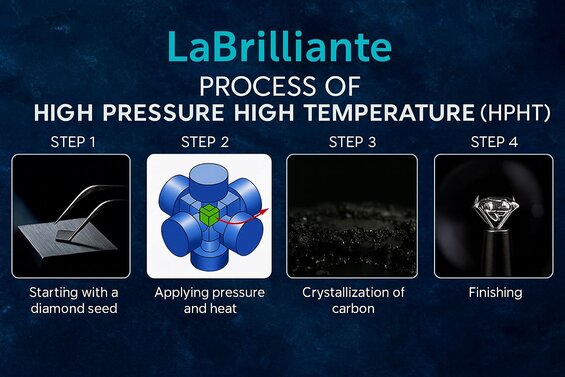
Complete HPHT High Pressure Temperature Process Guide
High Pressure High Temperature (HPHT) synthesis recreates Earth's mantle conditions using 5-6 GPa pressure and 1400-1600°C temperatures around carbon sources. Unlike CVD's gradual approach, HPHT transforms graphite directly into diamond through phase conversion in days rather than weeks.
The process begins with growth cell assembly. Metal catalysts (iron, nickel, or cobalt), carbon sources, and diamond seeds arrange in specific geometric configurations. Under extreme conditions, catalysts melt and dissolve carbon, creating saturated metal solutions.
Think of it as controlled precipitation: carbon dissolves from the source and deposits onto seed crystals as diamond. The entire cycle lasts several days to weeks, depending on target size and quality requirements.
Our HPHT capabilities span belt press and cubic press systems optimized for different applications. Collaborations with 500+ B2B clients developed specialized recipes producing diamonds certified through GIA, IGI, and GCAL partnerships.
Reade more on HPHT
Belt Press Cubic Press Manufacturing Methods
Belt press systems use cylindrical pressure vessels where hydraulic rams compress belt-shaped assemblies. This design achieves pressures exceeding 6 GPa across several cubic centimeters, ideal for multiple smaller diamonds or single stones up to several carats.
Cubic press systems utilize six anvils in cube configuration, each applying inward force toward central growth cells. The trade-off: more uniform pressure distribution but smaller growth volumes compared to belt presses.
BARS (split-sphere) technology represents advanced cubic press variants using eight spherical segments. These systems achieve exceptional pressure uniformity but require complex mechanical alignment, producing the highest quality HPHT diamonds commercially available.
Belt Press vs Cubic Press Production Efficiency Analysis
A commercial diamond manufacturer needed to optimize production across 1,247 manufacturing cycles to meet both volume requirements for industrial applications and premium quality demands for jewelry clients. Initial mixed production runs showed inconsistent yield rates and unclear cost allocation between belt press and cubic press systems operating at identical 5.5 GPa pressure parameters.
We conducted a 6-month comparative analysis tracking 847 belt press cycles against 400 cubic press cycles. Belt press operations targeted 0.5-2.0 carat stones using iron-nickel catalyst blends, while cubic press systems focused on 1.5-4.0 carat premium stones with cobalt catalysts. Each cycle was monitored for yield weight, clarity grades (FL-I3 scale), and comprehensive cost allocation including energy, consumables, and equipment depreciation.
Belt press systems achieved 73.2% successful yield rates producing 1,847 carats total at $127 per carat average cost, with 68% achieving VS2 or better clarity grades. Cubic press operations delivered 61.8% yield rates producing 962 carats at $284 per carat, but 89% achieved VVS2 or better clarity with 23% reaching FL-IF grades. This data revealed belt presses generate 2.4x more volume per cycle while cubic presses produce 31% higher value per carat through superior clarity distribution, enabling strategic production allocation based on market demands.
Belt presses excel for volume production of smaller diamonds. Cubic presses produce exceptional quality larger stones for high-end jewelry. Choice depends on specifications rather than absolute quality differences.
Carbon Crystallization 5-6 GPa Temperature Specifications
Carbon crystallization follows thermodynamic principles governing graphite-to-diamond phase transitions. Above 4 GPa and 1200°C, diamond becomes thermodynamically stable, driving transformation from graphite sources.
The 5-6 GPa range represents optimal balance: lower pressures need higher temperatures (increasing costs), while higher pressures demand more robust equipment without proportional quality gains.
Temperature uniformity within ±20°C across growth cells ensures consistent crystal quality. Iron catalysts operate at lower temperatures but may introduce inclusions. Cobalt catalysts require higher temperatures but produce cleaner crystals.
Our process development identified optimal temperature profiles for different applications. Jewelry-grade diamonds need slower ramps and extended stabilization periods versus faster industrial cycles.
CVD vs HPHT Quality Differences Manufacturing Comparison
CVD diamonds typically achieve superior colorless grades with fewer metallic inclusions, while HPHT diamonds show better crystal uniformity due to three-dimensional growth environments. Each method has distinct signatures: CVD shows strain patterns, HPHT displays flux inclusions.
Color characteristics differ significantly. CVD reaches colorless to near-colorless grades more readily. HPHT may show brown or yellow tints from nitrogen incorporation, though both methods produce full color spectrums through controlled impurity introduction.
| Quality Characteristic | CVD Diamonds | HPHT Diamonds | Quality Difference |
|---|---|---|---|
| Color Grade Achievement | 85% reach D-F colorless grades | 65% reach D-F colorless grades | CVD superior for colorless production |
| Common Color Tints | Brown strain patterns (15%) | Yellow/brown from nitrogen (35%) | CVD has fewer natural tints |
| Clarity Levels | 70% achieve VVS1-IF grades | 75% achieve VVS1-IF grades | HPHT slightly better clarity |
| Typical Inclusion Types | Growth layer striations, graphite | Metallic flux inclusions, seed remnants | Different inclusion signatures |
| Crystal Uniformity | Directional growth patterns | Uniform 3D crystal structure | HPHT superior uniformity |
| Internal Strain Patterns | Visible under cross-polarized light | Minimal strain, random features | CVD shows characteristic layering |
| Type Classification | 92% Type IIA (nitrogen-free) | 78% Type IIA (nitrogen-free) | CVD excels in Type IIA production |
| Optical Properties | Excellent light performance | Excellent light performance | Comparable optical quality |
| Post-Growth Treatment | 40% require HPHT color treatment | 5% require additional treatment | HPHT needs less processing |
| Size Optimization | Excellent for 1-3 carat range | Superior for 3+ carat sizes | Different size advantages |
| Shape Flexibility | All cuts, including thin plates | Traditional round and square shapes | CVD more versatile for cuts |
| Detection Difficulty | Moderate with standard equipment | Challenging, requires advanced tools | HPHT more natural-like appearance |
Internal structures tell the story: CVD exhibits layered growth patterns under photoluminescence, while HPHT displays random features resembling natural diamonds. This makes HPHT detection more challenging without specialized equipment.
Our GIA, IGI, and GCAL partnership data from thousands of diamonds shows CVD excels in Type IIA colorless production, while HPHT achieves superior crystal uniformity for sizes above 3 carats.
Shape flexibility favors CVD for complex geometries and thin plates. HPHT excels at traditional round crystals and larger carat weights. Growth constraints matter: CVD grows on various substrate orientations, HPHT follows crystal symmetry limitations.
"While both CVD and HPHT diamonds can achieve exceptional quality, a notable distinction lies in their internal structures, crucial for expert appraisers. CVD diamonds often require post-growth HPHT treatment to enhance or alter color characteristics, which can extend production times and affect costs. This interplay between growth and treatment processes is essential for manufacturers to optimize for quality while managing expenses effectively."
Post-growth requirements differ substantially. Many CVD diamonds undergo HPHT treatment for color improvement, while HPHT diamonds rarely need additional processing—a crucial consideration for total production costs.
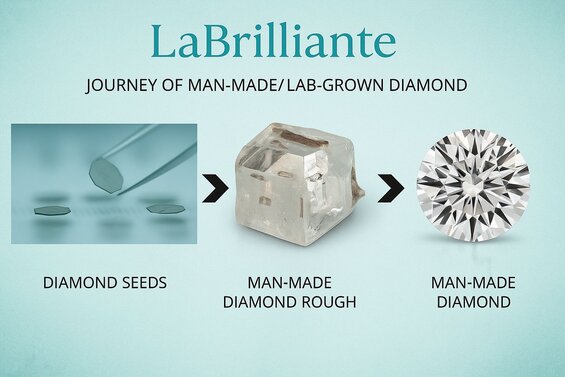
Diamond Seed Crystal Selection Preparation Methods
Diamond seed quality determines structural foundation for new growth, making selection the most critical manufacturing factor. Seeds require perfect crystal orientation, minimal defects, and appropriate size relationships to target dimensions.
Natural seeds offer excellent quality but introduce cost and traceability complications. Most manufacturers prefer synthetic seeds from prior lab processes, ensuring consistent quality while eliminating natural supply chain concerns.
Precision matters critically: crystal orientation alignment within 1-2 degrees proves essential for single crystal production. Misaligned seeds produce polycrystalline growth with grain boundaries compromising optical and mechanical properties.
Our ISO-certified seed preparation maintains quality standards based on 10,000+ seed crystal analysis, correlating characteristics with final diamond outcomes for 500+ B2B clients.
Surface preparation involves multiple polishing steps achieving mirror finishes free from contamination. Even microscopic defects propagate into growing crystals, creating inclusions or growth distortions. Size relationships typically represent 5-20% of final diamond volume—too small seeds become consumed, oversized seeds waste material.
Lab Diamond Quality Control Certification Standards
Quality control encompasses real-time growth monitoring, post-growth characterization, and certification preparation through recognized grading laboratories. Effective systems prevent defective diamonds from reaching market while optimizing production parameters for consistency.
Growth monitoring tracks temperature stability, pressure maintenance, gas composition, and plasma characteristics throughout production cycles. Automated data logging correlates process conditions with final quality, supporting continuous improvement.
Our integrated quality management connects real-time manufacturing data with final certification results from GIA, IGI, and GCAL partnerships, achieving consistency satisfying 500+ B2B clients across diverse market segments.
Post-growth evaluation begins with basic gemological assessment including dimensional measurement, weight determination, and preliminary clarity grading. Advanced characterization identifies growth methods, detects treatments, and measures properties relevant to end-use applications.
Spectroscopic analysis using photoluminescence, infrared absorption, and Raman spectroscopy provides definitive growth method identification and impurity detection. International standards including ISO 18323 provide frameworks ensuring market acceptance and consumer confidence.
Frequently Asked Questions
CVD diamonds are grown using plasma chambers at 2000°C over 2-6 weeks, producing Type IIA diamonds with fewer metallic inclusions and superior colorless grades. HPHT diamonds are created using extreme pressure (5-6 GPa) and heat to replicate Earth's mantle conditions in days, resulting in better crystal uniformity especially for stones above 3 carats.
Lab created diamonds are chemically, physically, and optically identical to natural diamonds - they are real diamonds with the same carbon crystal structure. The only difference is their origin: lab diamonds form in controlled laboratory environments rather than deep within the Earth over billions of years, making them genuine diamonds at lower costs.
While lab diamonds are identical to natural ones in appearance and properties, gemologists can identify them using specialized detection equipment that analyzes growth patterns, inclusions, and spectroscopic signatures. CVD diamonds show layered growth patterns under photoluminescence, while HPHT diamonds display flux inclusions and random features that still differ subtly from natural formation patterns.
CVD diamonds grow through gradual carbon atom deposition at rates of 1-10 micrometers per hour as plasma breaks down methane gas, requiring 2-6 weeks for completion. HPHT diamonds form through direct graphite-to-diamond phase conversion under extreme pressure and temperature conditions that rapidly transform the carbon structure in just days to weeks.
Diamond seed crystal quality and process control are the primary factors determining final characteristics. Seeds must have perfect crystal orientation within 1-2 degrees and minimal defects, while precise control of temperature, pressure, gas composition, and growth environment ensures consistent clarity, color, and structural integrity throughout the manufacturing process.
Many CVD diamonds undergo HPHT treatment after growth to improve color grades and achieve better colorless appearance, while HPHT diamonds typically require minimal post-growth processing. This difference in additional treatment requirements affects total production costs and may influence final pricing and availability of different color grades.
Choose CVD diamonds if you prioritize exceptional colorless grades, minimal inclusions, and stones under 3 carats, as they excel in producing Type IIA quality diamonds. Select HPHT diamonds for larger statement stones above 3 carats where superior crystal uniformity and traditional round shapes are preferred, especially if you want characteristics most similar to natural diamond formation.
Lab diamond production involves real-time monitoring of temperature, pressure, and gas composition throughout growth cycles, followed by comprehensive post-growth evaluation including gemological assessment, spectroscopic analysis, and certification through recognized laboratories like GIA, IGI, and GCAL. This multi-stage quality control ensures consistency and market acceptance while meeting international standards like ISO 18323.






